Japanese Artist Shota Nakamura Cannily Depicts What It’s Like to Dream—See Images From His Berlin Gallery Show Here
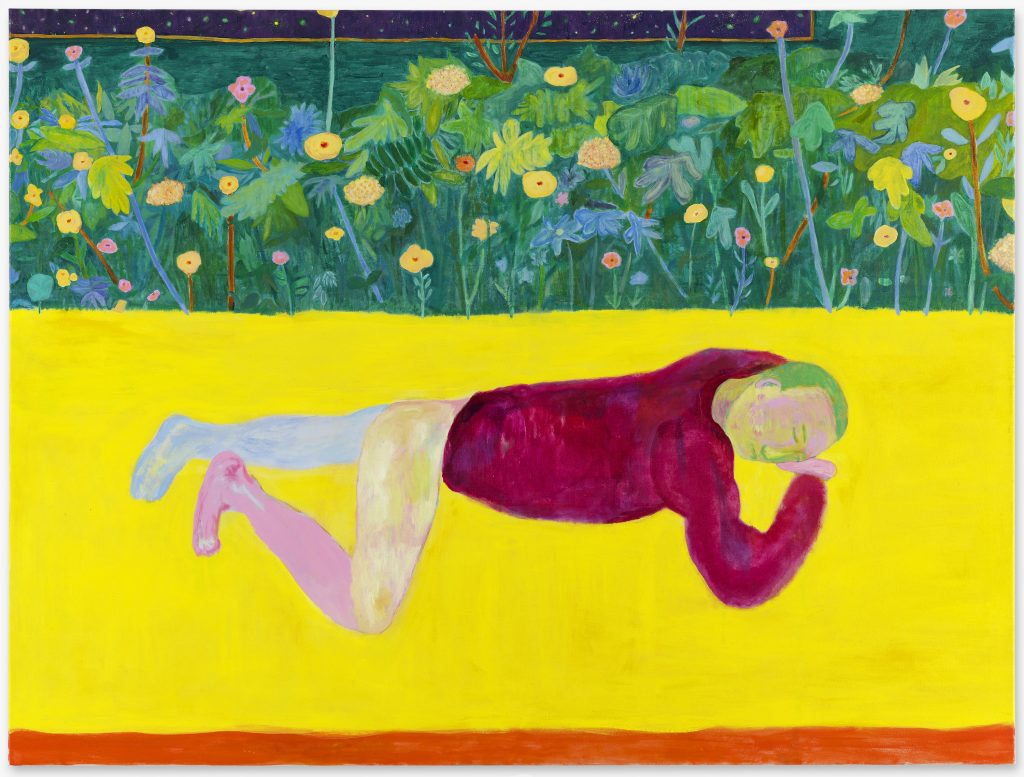

Katie White

Vivid and unusual dreams have become quite frequent for many of us over the past year. Scientific studies suggest that, in the absence of normal stimuli and with sudden shifts in our lifestyles, our somnambulant minds begin to scramble, tossing up all sorts of wild nighttime imaginings as we try to make sense of the world.
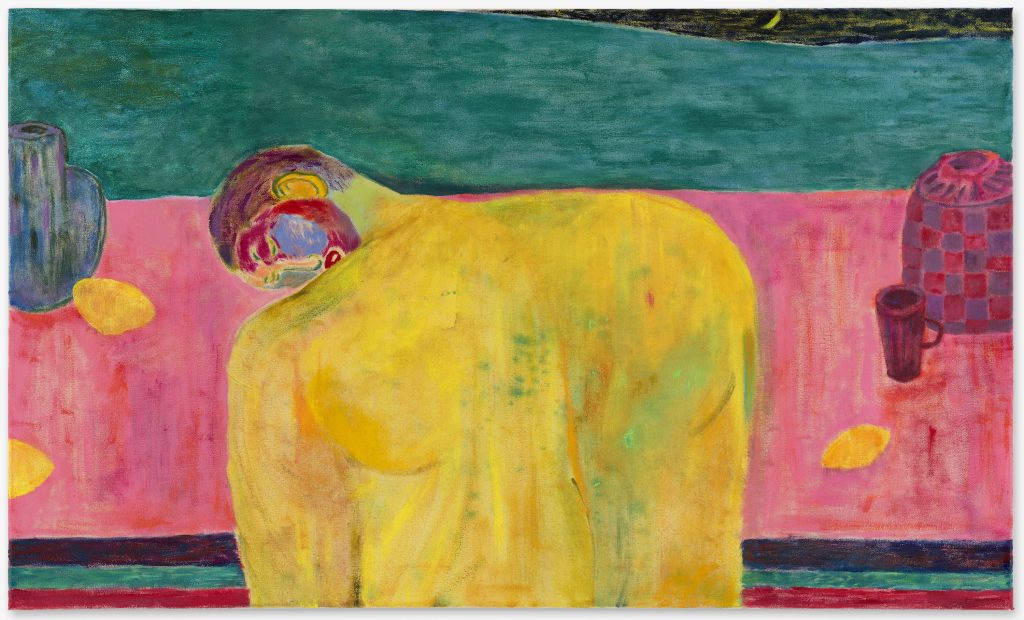
Shota Nakamura, lemon on the pink table (2021). Courtesy of Peres Projects, Berlin. Photograph by Matthias Kolb.
In “dear moon,” his first solo exhibition with Peres Projects, Japanese-born, Berlin-based artist Shota Nakamura delves into this world of sleep in a series of colorful new paintings. In these dreamscapes, domestic spaces and the natural world meld into one, with sleeping figures (Nakamura’s recurrent motif) sprawling out languorously across both bedroom and forest floors.
Made over the past year, the paintings are deliberate and slow, reveling in a sense of deep stillness as well as escape. In this world of dreams, desire and absurdity lead the mind without any conscious control.
Nakamura’s sleepers are all male and depicted with a tenderness and innocence that is subtly striking. In lemon on the pink table, a wide-backed figure in yellow appears to have fallen asleep at the table with a delicate teacup and a group of lemons scattered around him.
In other paintings, books are left open beside the sleepers, leaving viewers to imagine that their dreams are filled with visions from these stories. In an open book, a seemingly divine beam of yellow light swirling with blue birds shines down on the sleeper. In green moon, another figure’s supine, naked body appears in a configuration reminiscent of Renaissance depictions of the conversion of St. Paul who, fallen from his horse in battle, sees a vision of God.
Art-historical references are important to Nakamura’s compositions, too—Henri Matisse, Henri Rousseau, early Picasso, and hints of Symbolist artists like Puvis de Chavannes are all visible. Rather than some quick reverie, these paintings seem to imagine sleep as a profound and transformative experience.
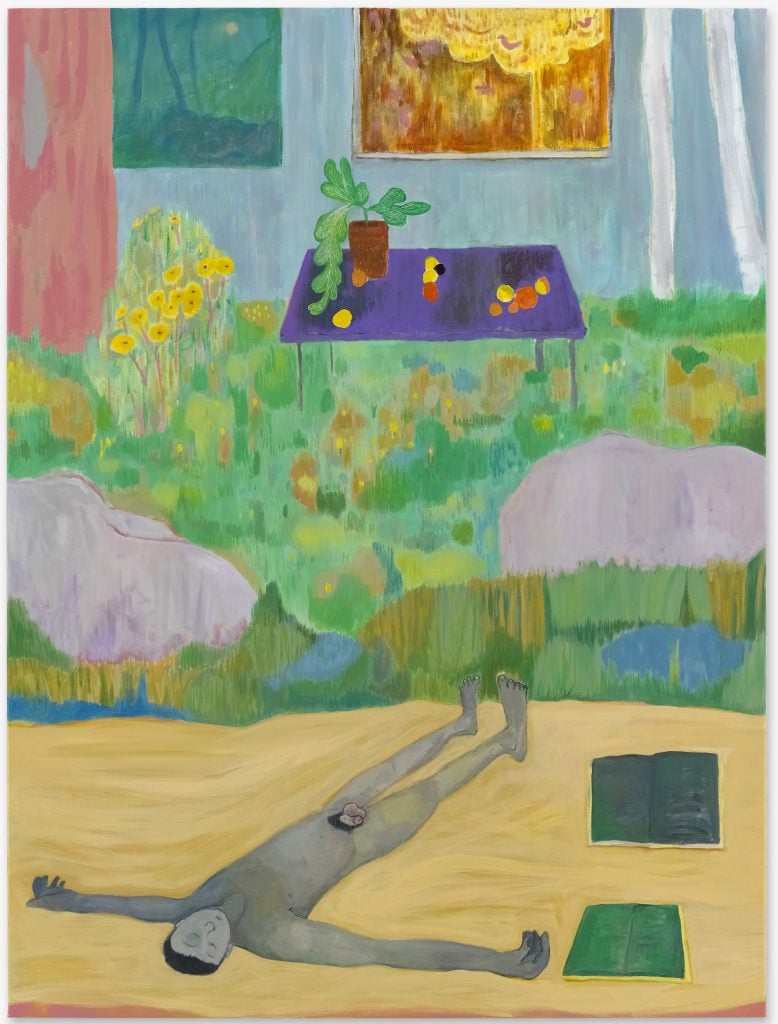
Shota Nakamura, green moon (2021). Courtesy of Peres Projects, Berlin. Photograph by Matthias Kolb.
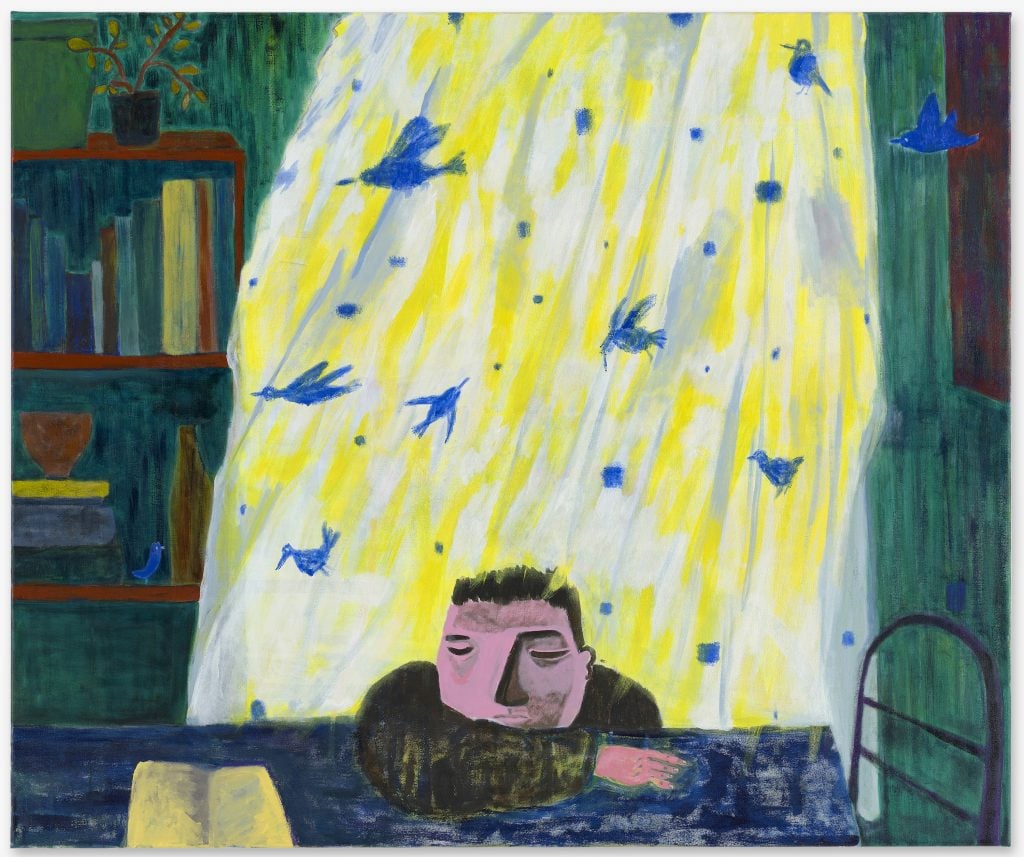
Shota Nakamura, an open book (2021). Courtesy of Peres Projects, Berlin. Photograph by Matthias Kolb.
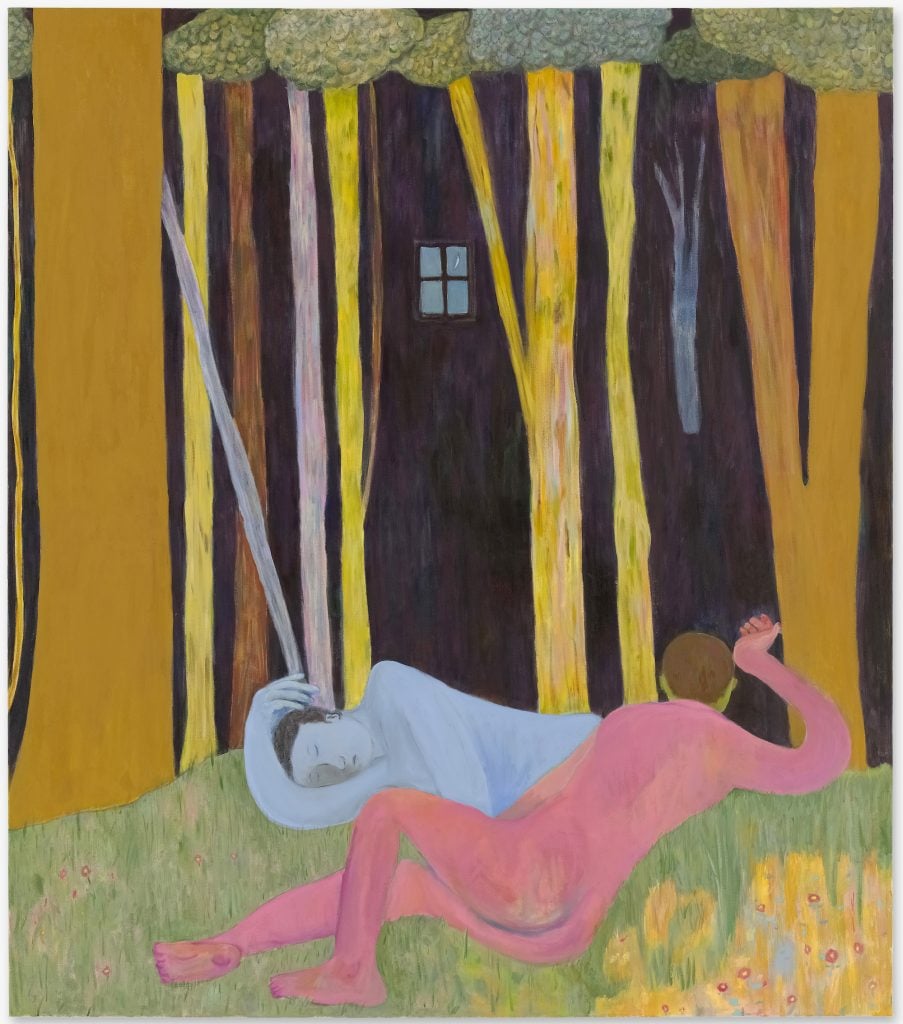
Shota Nakamura, sleepers (2021). Courtesy of Peres Projects, Berlin. Photograph by Matthias Kolb.
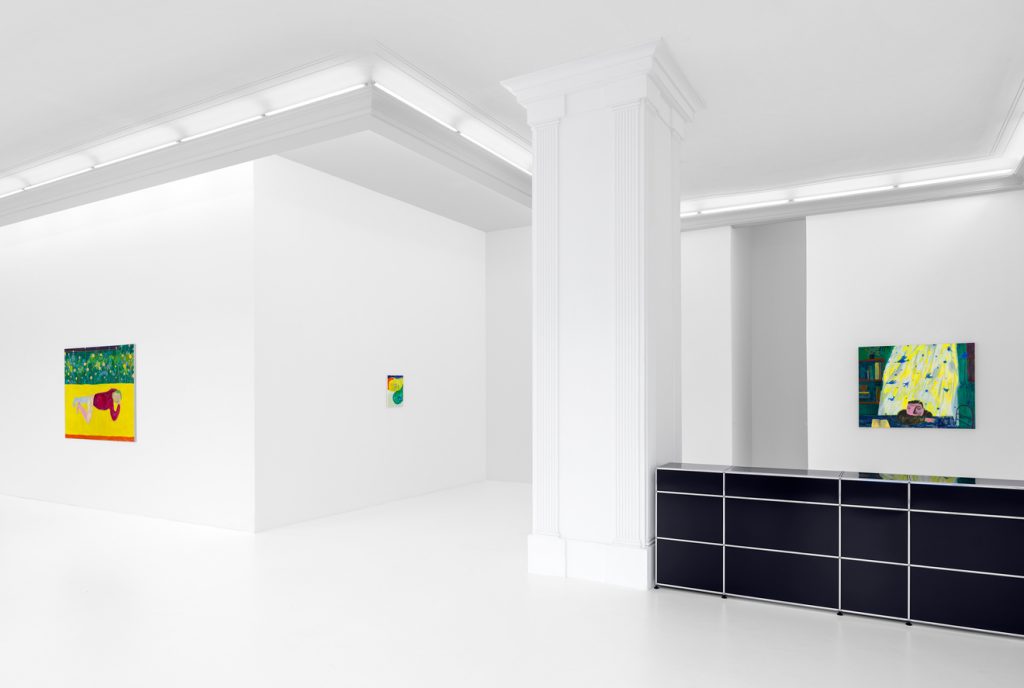
Installation view of “Shota Nakamura: dear moon” 2021. Courtesy of Peres Projects.
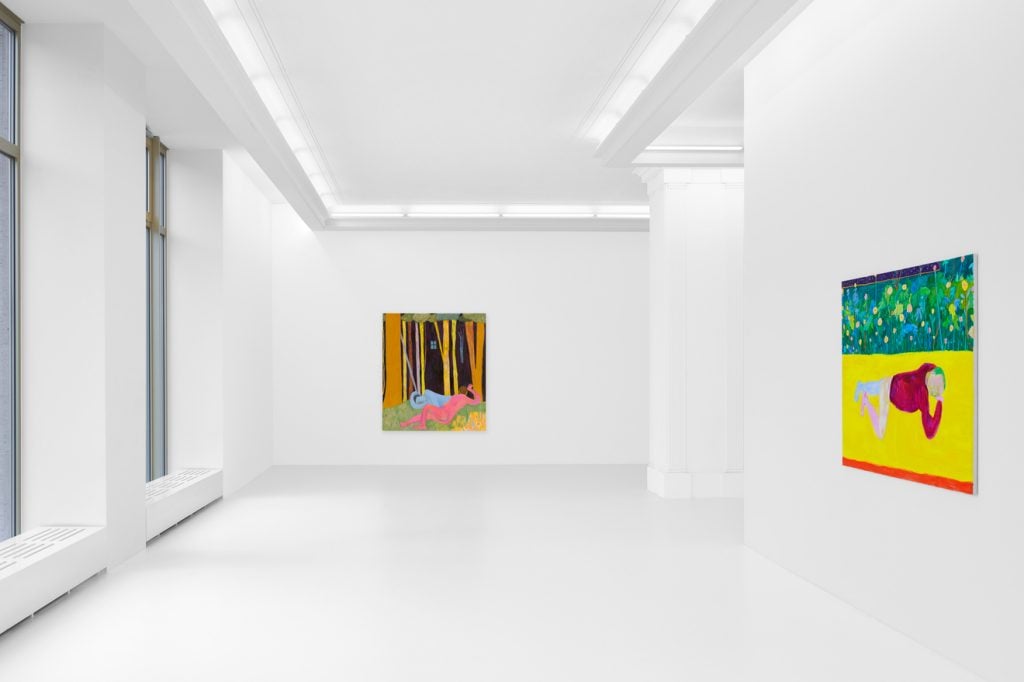
Installation view of “Shota Nakamura: dear moon” 2021. Courtesy of Peres Projects.
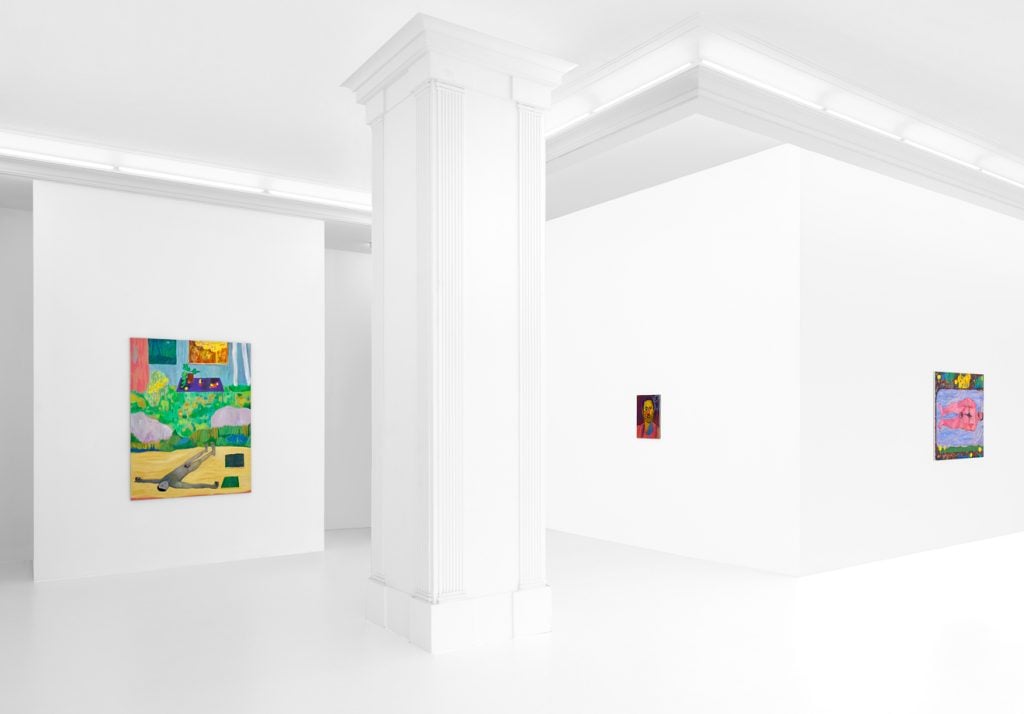
Installation view of “Shota Nakamura: dear moon” 2021. Courtesy of Peres Projects.
“Shota Nakamura: dear moon” is on view at Peres Projects through April 16, 2021.